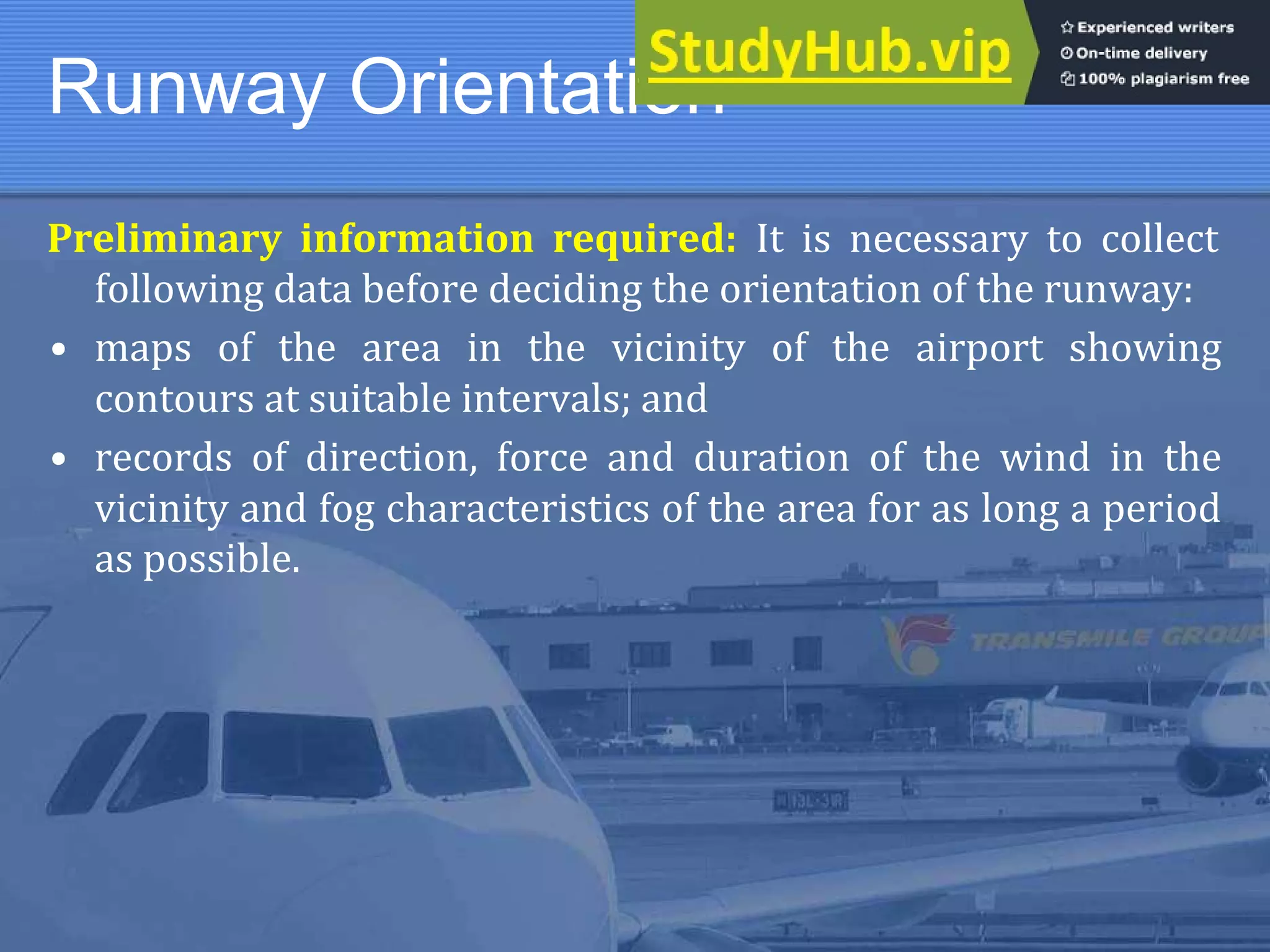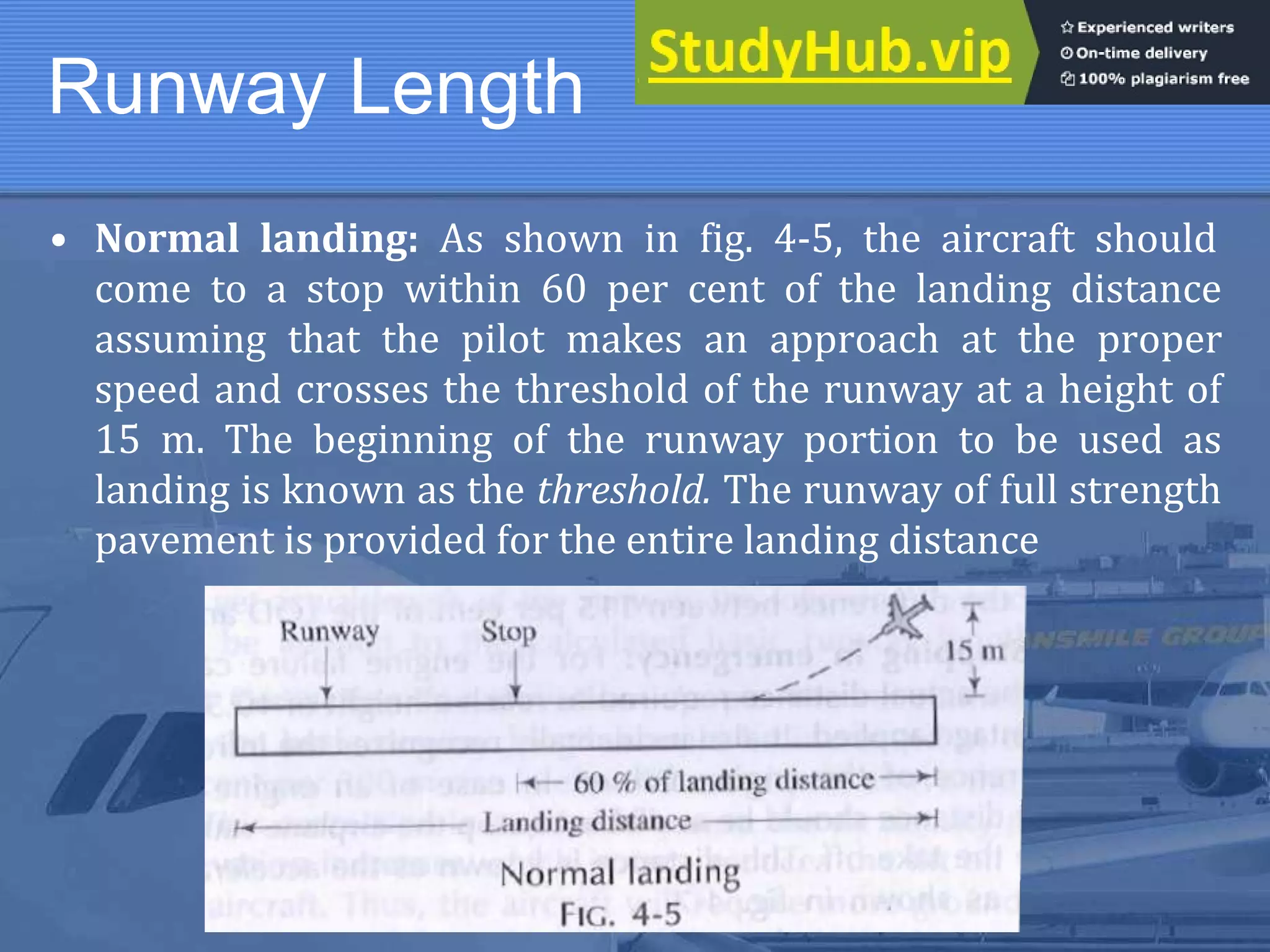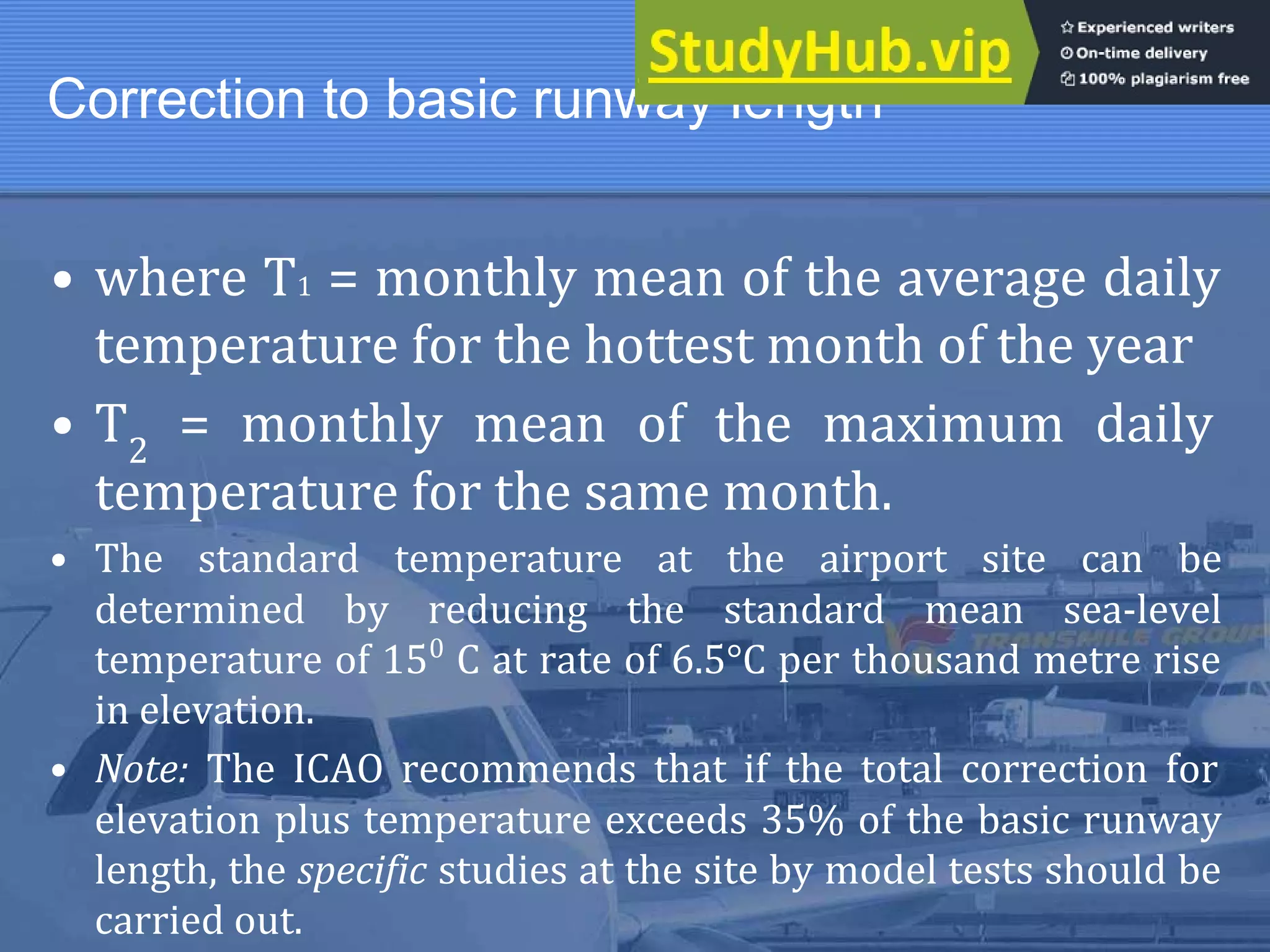An airport is a facility with runways and buildings where aircraft take off and land, connecting air transportation to ground transportation. Key components of an airport include runways for takeoffs and landings, hangars for storing and maintaining aircraft, and terminal buildings. Careful consideration must go into selecting an airport site, including factors like land availability, weather conditions, and accessibility. Runway orientation is also important, with runways often aligned with prevailing winds for safety during takeoffs and landings.










































































